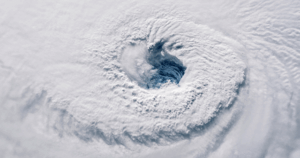Protecting Lives: The Role of an Event Safety Manager

A Day in the Life of an Event Safety Manager: When Weather Can Make or Break a Festival
Outdoor festivals and live events thrive on spectacles, the booming sound, dazzling lights, and thousands of people moving as one. But behind the scenes, there’s someone whose job is far less glamorous yet absolutely vital: the Event Safety Manager. Their world revolves around one unpredictable factor that can make or break any gathering—the weather.
Planning Ahead: 7–14 Days Out
Long before gates open, a Safety Manager is already scanning the horizon. They’re not just checking the weekend forecast on a phone app. Instead, they’re reviewing long-range weather models, identifying patterns that could affect site setup, drainage, wind exposure, or access roads. Adjustments to facilities and events, like adding wind barriers or repositioning tents, may be made days in advance.
The stakes are high: lightning, high winds, and heat waves are more than inconveniences; they’re life-threatening hazards. The National Weather Service recommends suspension of activities when lightning is within roughly 8 miles, and many organizations adopt a 10-mile standard for safety. OSHA data show high winds are a leading cause of stage and tent collapses. And according to the CDC, extreme heat kills more Americans each year than hurricanes or floods.
48 Hours Out: Precision Briefings
Two days before the first act, the Safety Manager convenes with the command team. They deliver a detailed weather briefing: Will storms line up with showtimes? Could heat indexes exceed safe thresholds? Are winds strong enough to stress rigging and stages? This is when safety triggers are identified—conditions that will force evacuation, suspension, or shelter-in-place orders if met.
Showtime: The Day of the Event
When the event day arrives, the Safety Manager is among the first on site. At call time, they check forecasts again, test instruments like anemometers, rain gauges, and lightning detectors, and ensure communications with Site, Production, and Public Safety teams are live.
During the show, their role is constant vigilance. Radar scans and on-site measurements feed into updates every 15–30 minutes, or immediately if alerts pop. A sudden wind shift or lightning strike can trigger a cascade of actions: halting performances, rerouting crowds, or sheltering thousands in minutes.
When the Sky Turns Dangerous
When severe weather strikes, seconds matter. A Safety Manager activates an Event Ready Guide – suspending performances, evacuating attendees, or directing people to shelter. Coordination with Public Safety and Production ensures orders move swiftly through staff radios, digital signage, and PA systems.
The risks are not hypothetical. In 2011, high winds collapsed a stage at the Indiana State Fair, killing seven and injuring dozens. In Belgium that same year, sudden 60 mph gusts at the Pukkelpop Festival brought down a stage and tents, killing five. Every Safety Manager carries these case studies in the back of their mind, a reminder of what can happen when weather moves faster than decision-making.
After the Last Note
Once the crowd disperses, the work continues. Safety Managers log weather data for incident reports, compliance reviews, and insurance documentation. These records are often required by permits and can be the difference between coverage and financial ruin if damages occur.
Why Weather Can Bankrupt a Festival
Weather isn’t just a safety issue but also a business risk. Industry reports estimate that 40–50% of all event cancellation insurance claims are weather-related, with payouts ranging from hundreds of thousands to tens of millions. A single full-day festival cancellation can wipe out millions in ticket and concession revenue. And cancellations hurt brand trust—sponsors may drop, attendees may demand refunds, and future ticket sales can falter.
Consider Woodstock 50, which collapsed in part due to weather and permitting issues, losing an estimated $30–50 million. Or the 2023 Blue Ridge Rock Festival in Virginia, canceled mid-event due to storms, leaving organizers with lawsuits and refund liabilities.
The Unseen Guardian of the Event
To the audience, the Event Safety Manager may be invisible. But they are the unseen guardian, balancing safety, compliance, and profit. Their ability to translate complex weather data into fast, decisive actions protects not only lives but the very survival of the event itself.
As one industry maxim goes: “Weather is the leading non-human hazard at outdoor events. The difference between a safe show and a catastrophe comes down to preparation, vigilance, and speed.”
For today’s Event Safety Manager, that preparation isn’t optional, it’s existential.











 Comprehensive weather insights help safeguard your operations and drive confident decisions to make everyday mining operations as safe and efficient as possible.
Comprehensive weather insights help safeguard your operations and drive confident decisions to make everyday mining operations as safe and efficient as possible. Learn how to optimize operations with credible weather and environmental intelligence. From aviation safety to environmental compliance, our comprehensive suite of solutions delivers real-time insights, advanced forecasting, and precise monitoring capabilities.
Learn how to optimize operations with credible weather and environmental intelligence. From aviation safety to environmental compliance, our comprehensive suite of solutions delivers real-time insights, advanced forecasting, and precise monitoring capabilities. 

